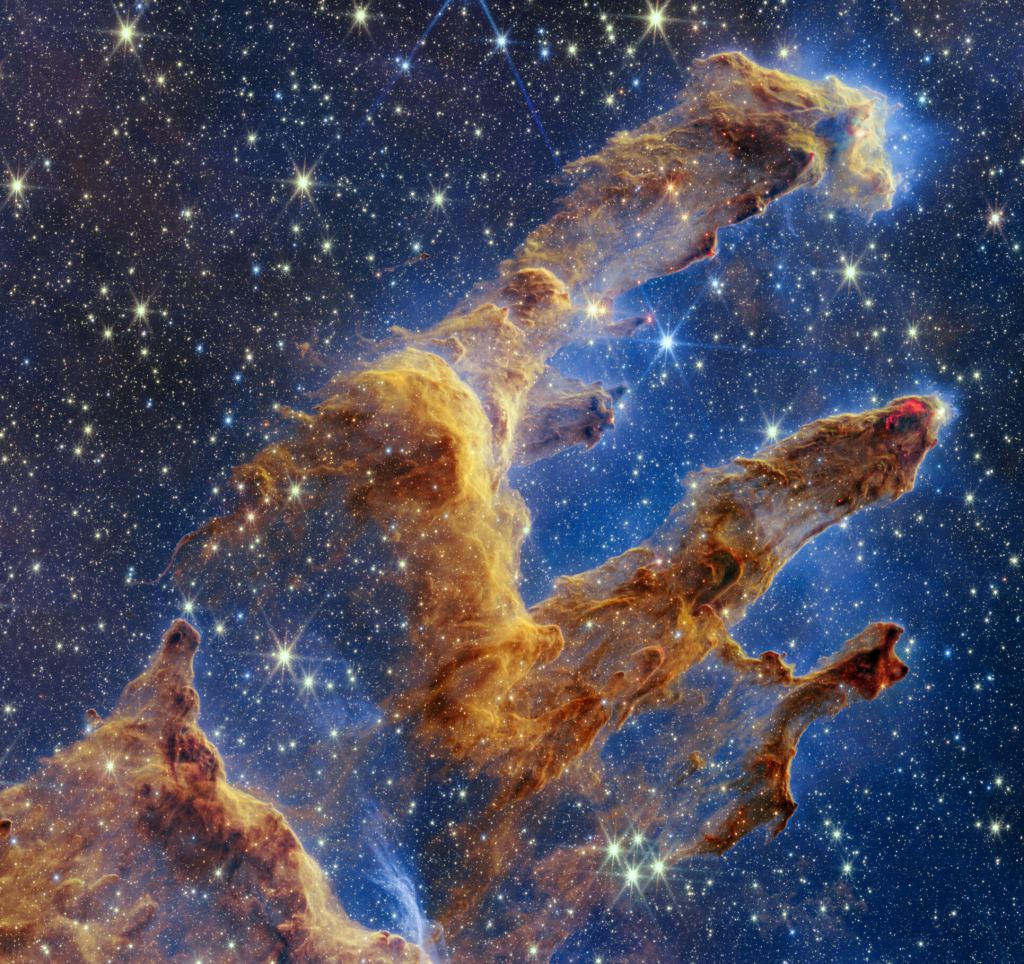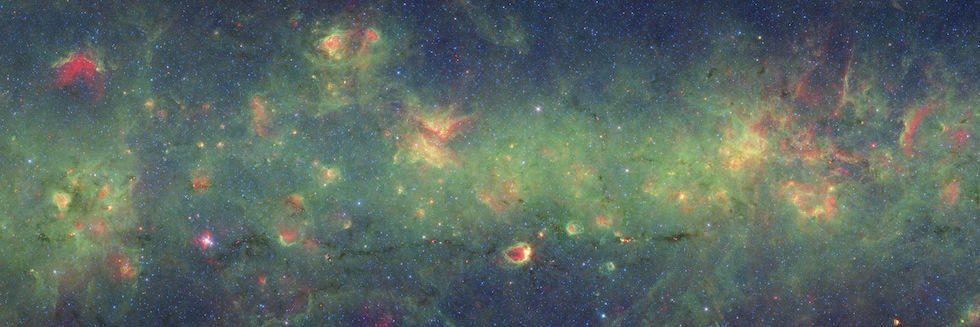Star formation is one of the oldest processes in the Universe. In the Milky Way and most other galaxies, it unfolds in cold, dark creches of gas and dust. Astronomers study sites of star formation to understand the process. Even though they know much about it, some aspects remain mysterious. That’s particularly true for the “Nessie Nebula” in the constellation Vulpecula. An international team led by astronomer James Jackson studies the nebula and its embedded star-birth regions. They found that it experienced a domino effect called “triggered star formation.”
“So, one of the interesting and open questions remaining in the field of star formation is, what happens when a star forms and ejects energy into the surrounding medium?” he said. “Does it make new stars, or does it prevent the formation of new stars?”
To answer those questions, Jackson and an international team of observers peered deep into the Nessie Nebula. It’s a so-called “Infrared Dark Cloud” (IRDC) with the official catalog name Lynds 772. Jackson named it the Loch Ness Monster Nebula a few years back. That’s because it resembles a spindly version of the famous and elusive Scottish lake monster. What the team found reveals that triggered star formation actually does take place under special circumstances in this nebula.
Putting the Nessie Nebula in Perspective
In 2013, Dr. Alyssa Goodman of Harvard Center for Astrophysics called the Nessie Nebula one of the “bones” of the Milky Way. That’s because it’s one of many webs of dusty filaments threaded through the galaxy. “It’s possible that the Nessie bone lies within a spiral arm, or that it is part of a web connecting bolder spiral features,” she said, noting that it probably spans at least 80 parsecs long and about a half-parsec wide.
As a galactic “bone”, it’s a prime place to look for triggered star formation. Nessie has a density of about 600 solar masses per parsec across its entire length. It’s also cold, with an average temperature of about 10K. There are many such cold clouds in the Milky Way, notably places like the famous Pillars of Creation or regions in the Carina Nebula.

A star gets started when gravity pushes the material in the cloud together to form a hot core. Temperatures and pressures rise, and eventually, a star is born. The Nessie Nebula is actually dense enough to form many very high-mass stars, according to Jackson. “By high mass, I mean a star that’s about 8 times the mass of the Sun, or more,” he said. “They have so much more energy than the Sun, and they inject this energy into the surrounding material, and they form these H II bubbles that ionize the gas around them.”
Essentially, those H II bubbles form as stellar winds from the hot young protostars push into surrounding space and photoionize (or heat) the gas there. As they expand, they stir up material around them. That creates a lot of energy. “The question I’m trying to answer is, does this energetic feedback trigger or hinder the formation of other new stars?” said Jackson.
The Domino Effect in the Nessie Nebula
The scenario for triggered star formation requires an almost perfect set of circumstances, starting with the cold dense nebula. Jackson explained that once a star (or group of stars) forms, its H II bubble triggers the birth process of the next star. That process repeats, almost like a domino effect.
So, does this triggered star formation really happen? Jackson pointed out two different scenarios. “If bubbles are just dispersing the gas, then that gas is gone and no stars can form,” he said. “On the other hand, if you have a clump of gas that’s almost ready to make a star, but not quite, can you hit it with an expanding shell and compress it? It could push it over the edge and gravity can take over. Some people say you make new stars and some say you don’t.”
To find out, the team looked at Nessie with the infrared-sensitive SOFIA flying observatory. It allowed them to peer through the clouds of gas and dust at the central region of the nebula. They coupled their observations with radio data from the Australia Telescope Compact Array and the Mopra radio dish. They zeroed in on its most luminous young stellar object, called AGAL337.916-00.477. This high-mass stellar object is part of a cloud in the nebula that has several other high-mass young stellar objects and so-called “dust cores” where the process of star formation is taking place. AGAL337.916-00.477 is interesting because it appears to have a bi-lobed outflow of its own, which could trigger other new stars to form in the future.

Triggering the Dominos
What can this protostar tell us about triggered star formation? For one thing, its location is a big hint. It lies directly at the intersection between one of those expanding HII bubbles made by the birth of nearby stars and a rich, dense filament in the body of the Nessie Nebula. The bubble contains high-energy stars and HII regions, along with the bright young protostar. The team looked specifically at the intersection of the bubble and the filament and found radio emissions from warm ammonia gas and silicon monoxide (SiO).

“These are telltale signs of a shock,” Jackson said. “What that means is that the gas from the expanding bubble is slamming into the film, and at supersonic speeds and heating and compressing it right at that spot in the Nessie filament.”
Jackson called these observations the “smoking gun” proof that the shock front is slamming into the filament at supersonic speeds and that the collision is what caused the luminous protostar to form. “The collision with the bubble has compressed the filament and that material then can collapse into a protostar,” said Jackson. “What’s kind of cool about this is it suggests a scenario where you have falling dominos. So a star makes a bubble that makes another star in the filament. And, that’s exactly what you see, a bunch of bubbles spaced down the filament.”
These observations show astronomers another aspect of the star birth process. “We’ve known for some time that Nessie is the birthplace of stars,” said Jackson, noting that Nessie is poised to collapse into more stars. “We’ve wondered about whether an older generation of stars can trigger the birth of new stars in a filamentary cloud. With these data, we can see the triggering process in action.”
For More Information
Cosmic Collision: Space Nessie Spawns Newborn Star
First Milky Way’s Galactic Bone Identified – Nessie Bone
A Massive Molecular Outflow in the Dense Dust Core AGAL G337.916-00.477

